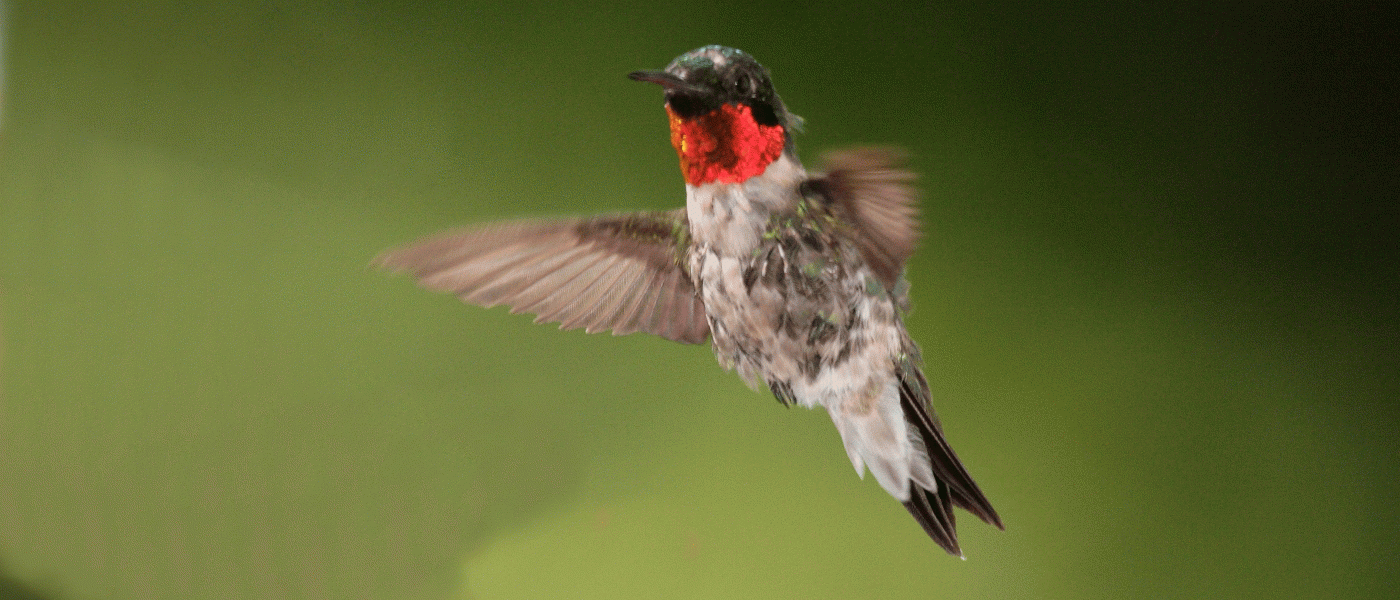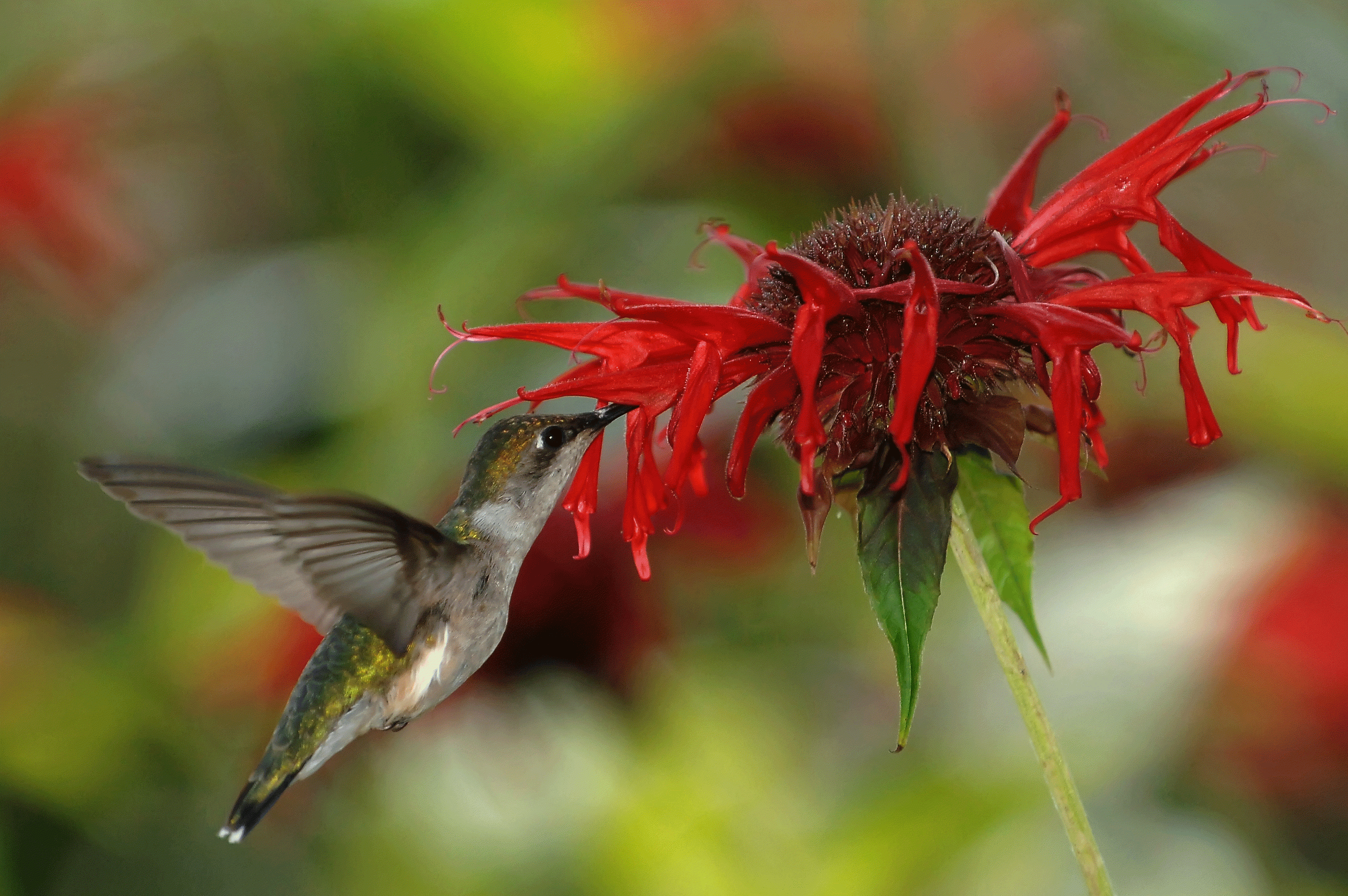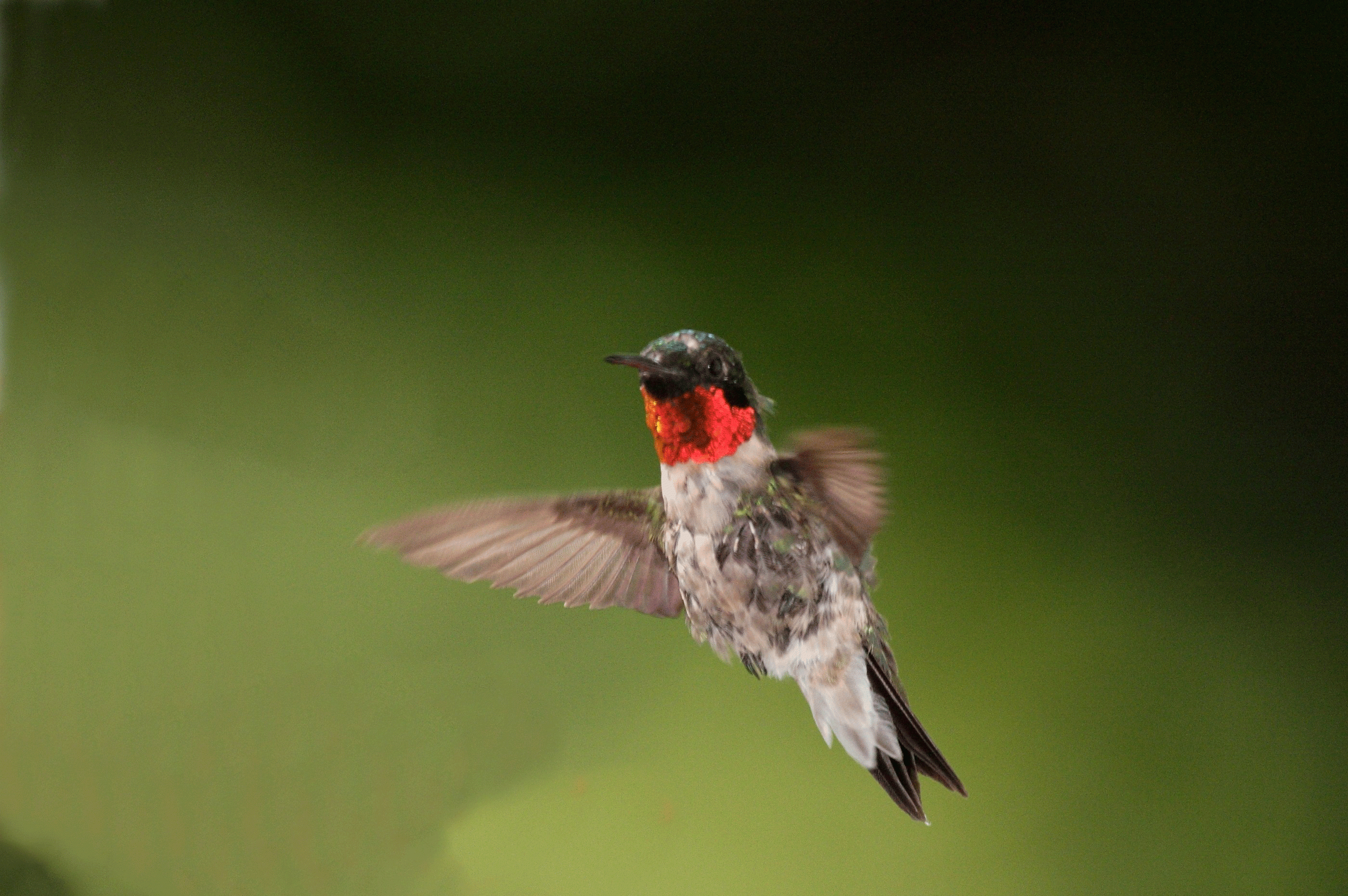Birds of Brooklyn: Ruby-Throated Hummingbird
I started bird-watching in the fall of 1988 with a birding class given by Brooklyn Botanic Garden. My instructor was John Yrizarry and he set me on a path of excitement and joy that some 30 years later is still with me. I remember the day very well—a cool September Saturday.
Where the Visitor Center entrance is now was the old Herb Garden, and that was where I saw my first ruby-throated hummingbird. It was amazing. The bird flew forward and backward. It hovered in the air. Its wings beat so fast you couldn’t even see them. This little hummingbird favored red, bell-shaped flowers, darting quickly into them and then out. It didn’t have a ruby throat—I was later to learn that it was a female. My classmates and I were all hooked—and I had to find out more.
The ruby-throated hummingbird is basically the only hummingbird in the Eastern United States. It is a spring and summer resident here in the NYC area and a winter resident in Central America. A few years ago a hummingbird actually tried to nest in Central Park. Unfortunately the nest was predated and unsuccessful. It could possibly try again. I have seen nests in Queens, Suffolk and Nassau counties, and all over New York State, as well as throughout the Eastern U.S. It is not a confirmed breeder in Prospect Park, but there is that possibility in the future.
The nest and its placement are of great interest. Constructed of thistle and plant down held together with strands of spider web, made entirely by the female. The outside is covered with lichen, probably to help disguise it. It’s about the size of half a walnut shell. The male is involved only for mating and takes no part in nest building or rearing of the young. Nests are usually made in a deciduous tree on a branch that points downward, usually over an open area like a road or path, near a forest edge. Typically, two eggs are laid and incubated by the female for about 12 days. About 18 days after hatching, the young fledge. By this time, early July, the male is probably halfway on his journey back to the wintering grounds in Central America.
Gardeners can attract hummingbirds to their backyards either by the growing of red, tube-shaped flowers like cardinal flower and bee balm, or by including hummingbird feeders. These feeders are usually red and contain a sugar water mixture of one part sugar, four parts water. Hummingbirds are very fussy and if the mixture is not right they won’t take it. If, say, some rainwater gets into the the solution, they won’t take it. The feeder solution must also be changed frequently, at least every other day or the mixture goes sour, especially in warm weather.
For pure enjoyment, the ruby-throated hummingbird has to be at the top of most birder’s lists. In spring when males are plentiful, just catching the ruby color as the sunlight strikes it just right is pure joy for the bird watcher. The forward and backward motion of the bird is a thrill to watch. Males also perform a flight display that consists of a giant “U.” From a stationary position they fly down, complete the “U” and then return to another stationary position. This is done just to impress the female. All I can say is that the smallest bird in Eastern U.S. makes the biggest impression.
The Birds of Brooklyn series looks at some of the most familiar and fascinating birds that call Kings County their habitat.




